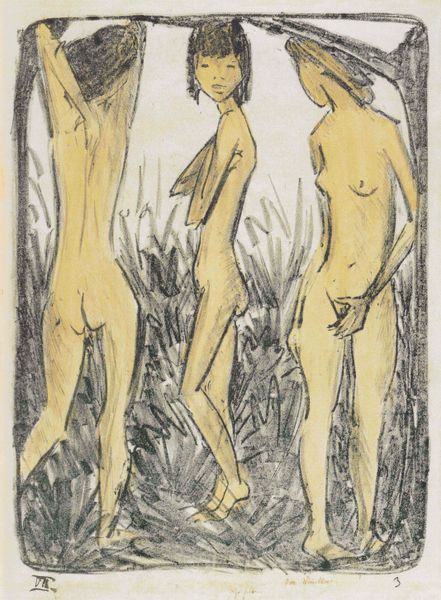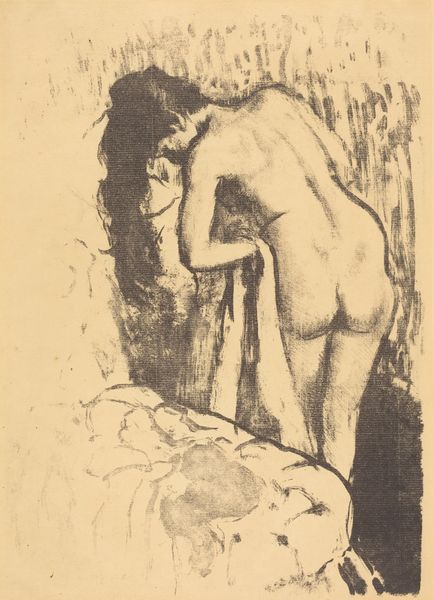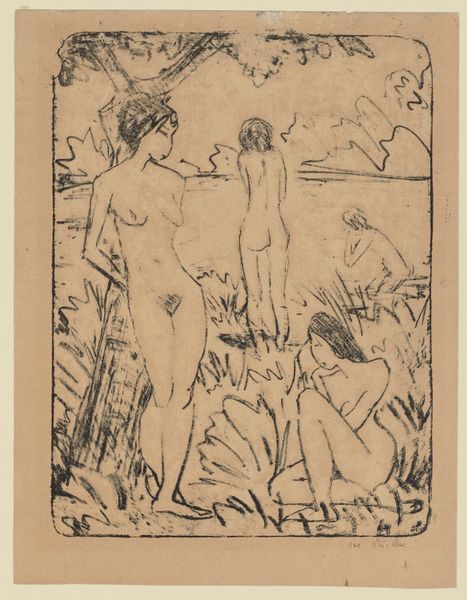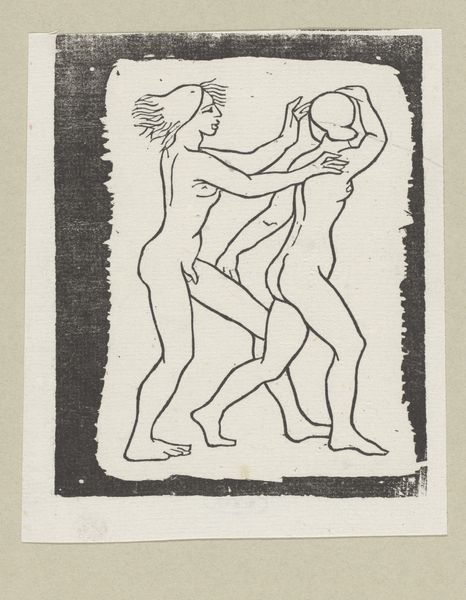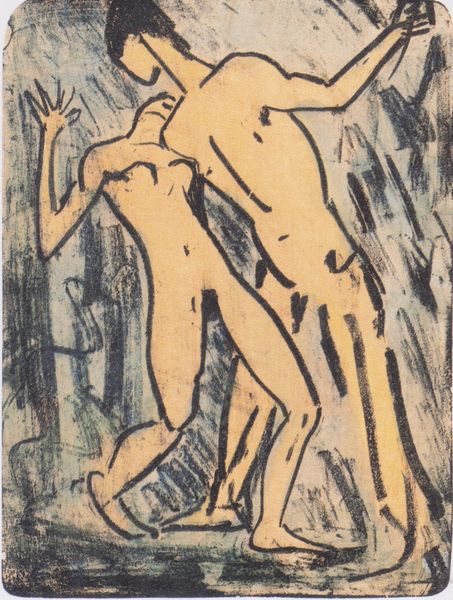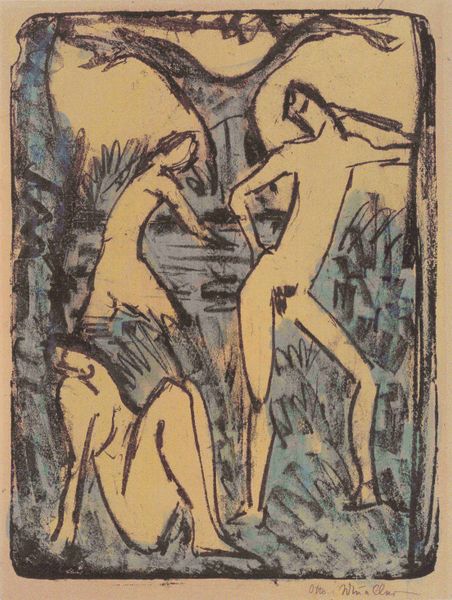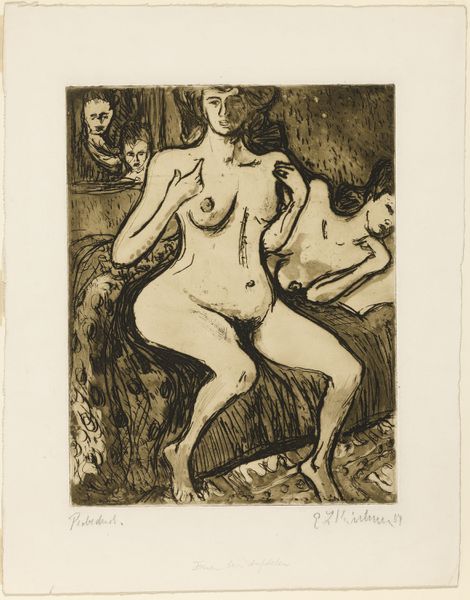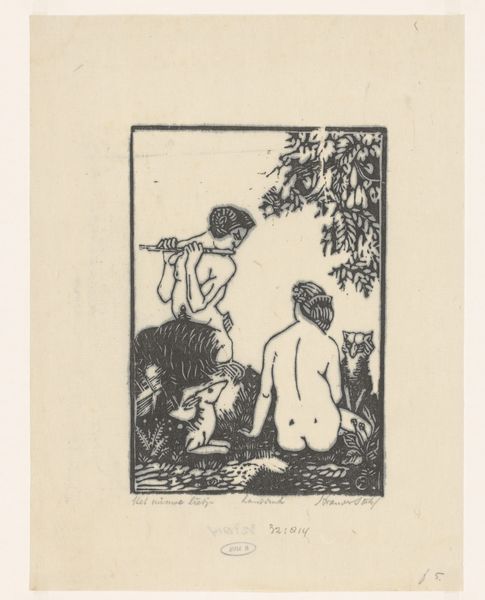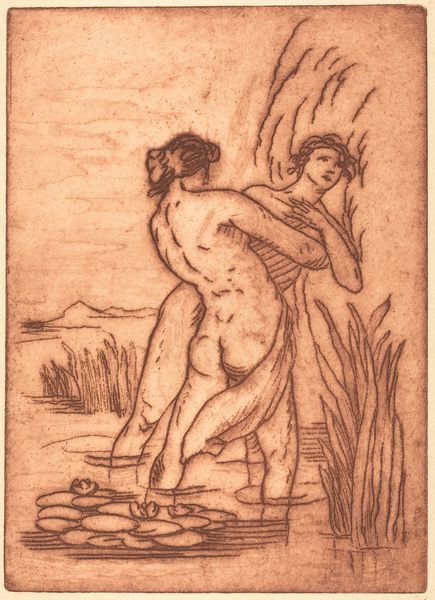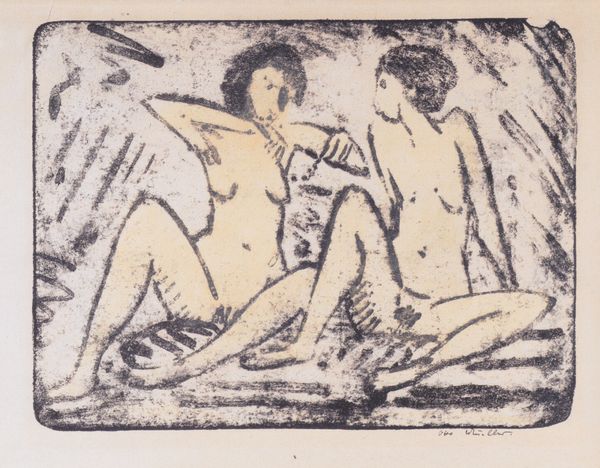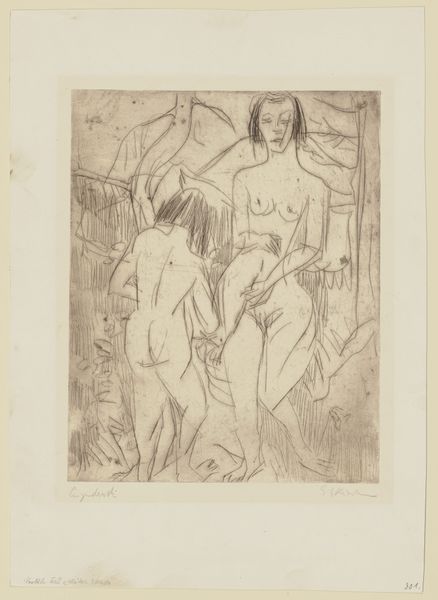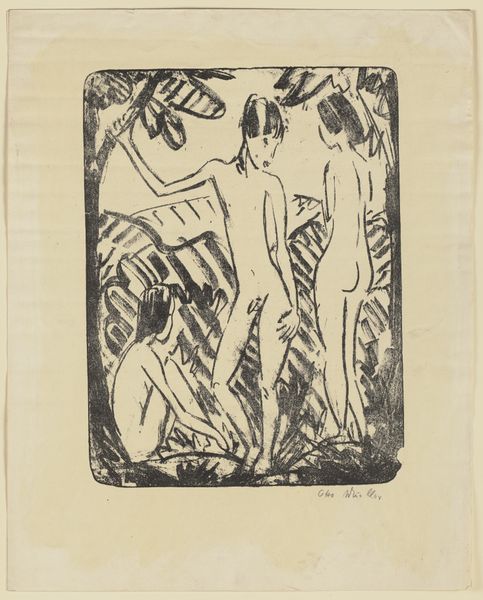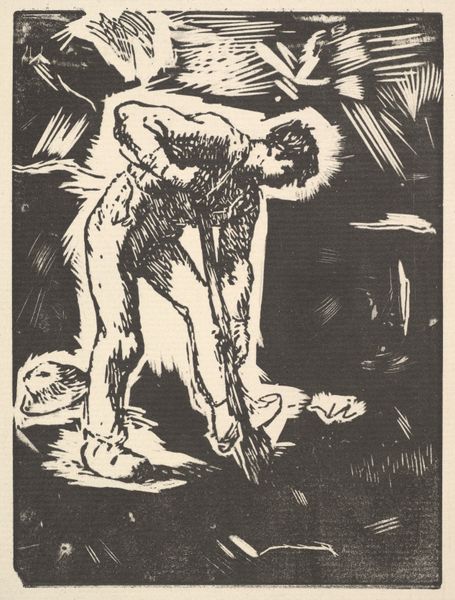
Standing Boy and Two Girls (Stehender Knabe und zwei Madchen) 1917
0:00
0:00
drawing, ink
#
drawing
#
landscape
#
german-expressionism
#
figuration
#
ink
#
expressionism
#
nude
Dimensions: sheet: 49.85 × 39.37 cm (19 5/8 × 15 1/2 in.) image: 32.39 × 24.77 cm (12 3/4 × 9 3/4 in.)
Copyright: National Gallery of Art: CC0 1.0
Curator: Looking at Otto Mueller’s ink drawing from 1917, titled “Standing Boy and Two Girls”, the first thing that strikes me is its somewhat melancholic stillness. It’s as if we’ve stumbled upon a private, silent gathering. Editor: Absolutely. The sparseness of the ink drawing contributes to that feeling. The lines are so economical, yet they convey form and emotion effectively. I can sense a sort of primal innocence but also the looming shadow of Expressionism. Curator: Indeed. Mueller's involvement with Die Brücke is important to understand. Their commitment to challenging bourgeois values resonates strongly here. Nudity became a form of social critique, a return to nature and a rejection of restrictive societal norms. The figures seem almost lost within a landscape that both protects and confines them. Editor: And the landscape itself is intriguing, the simple rolling hills could almost echo the figures' own contours, like a shared silent rhythm. Note the stylized forms of the children, almost as if they are reduced to archetypes of youth and the collective memory of pastoral refuge. Curator: The positioning of the figures feels purposeful too. The standing boy, acting almost as a boundary with the world, looks off to some vague point on the horizon. There is one figure crouched away from him in shadow. What relationship is implied by these arrangements? Editor: One could argue the boy in the center, the more overtly masculine one, serves as a symbol of adolescent awareness, framed by the natural world and perhaps wrestling with his own selfhood. This could be about transitions. Curator: It's worth considering that this piece was created during the First World War. Mueller, while initially a volunteer, was later deemed unfit for service. Does the drawing present an idealized retreat away from conflict, or is it haunted by an underlying sense of disruption? Editor: Perhaps a yearning for a prelapsarian idyll? This does seem more inward-looking and dream-like than an outward-facing statement. It’s as if these children inhabit a liminal space, caught between innocence and a looming reality. Thank you, this was interesting. Curator: Yes, this image is indeed an invitation to look deeper than surface representation, considering both intimate feeling and broader societal concerns. A complex tension in a simple, subtle package.
Comments
No comments
Be the first to comment and join the conversation on the ultimate creative platform.
